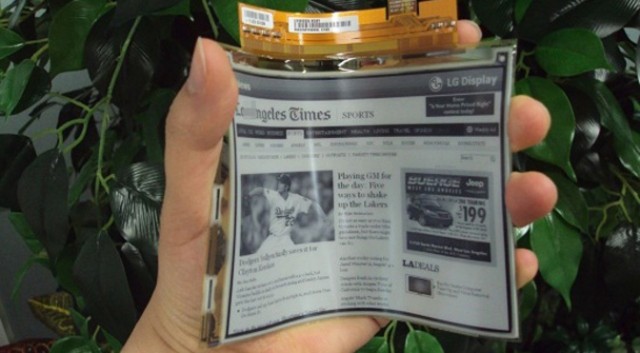LG begins mass production of first flexible, plastic e-ink displays
March 30, 2012
LG has begun mass production of the world’s first flexible, plastic e-ink display, ExtremeTech reports.
The display has a resolution of 1024 x 768 and is six inches across the diagonal, which is comparable to the Kindle and Nook.
Because it’s made of plastic and not glass, though, the LG display is half the weight (14g) and 30% thinner (0.7mm) than a comparable, glass e-ink panel.
Existing e-book readers need to be thick (and heavy) to protect the glass display, but LG is promising that its display is a lot more rugged.
The press release suggests that LG is using a conventional TFT process, which hints that they’ve cracked Electronics on Plastic by Laser Release (EPLaR). EPLaR is basically a technique of embedding electrophoretic ink capsules in a plastic substrate, but using existing manufacturing processes, rather than building a whole new factory (unlike E Ink, which makes displays for the Kindle and other e-book readers).
In short, though, LG is promising plastic e-ink displays that are thinner and more power efficient, and because anyone with a TFT process can make displays in this way (Samsung, Sharp), they will also be cheaper.
Unlike flexible OLED displays, e-ink displays are cheap to produce and can run for months on a small battery. With plastic e-ink displays, you could actually create an e-book reader that’s the size, shape, and flexibility of a book; it could even be made predominantly of paper.
According to LG, the first plastic display-toting e-readers are expected to emerge in Europe “at the beginning of next month.”
Also see Geek.com feature on the future of e-ink.
